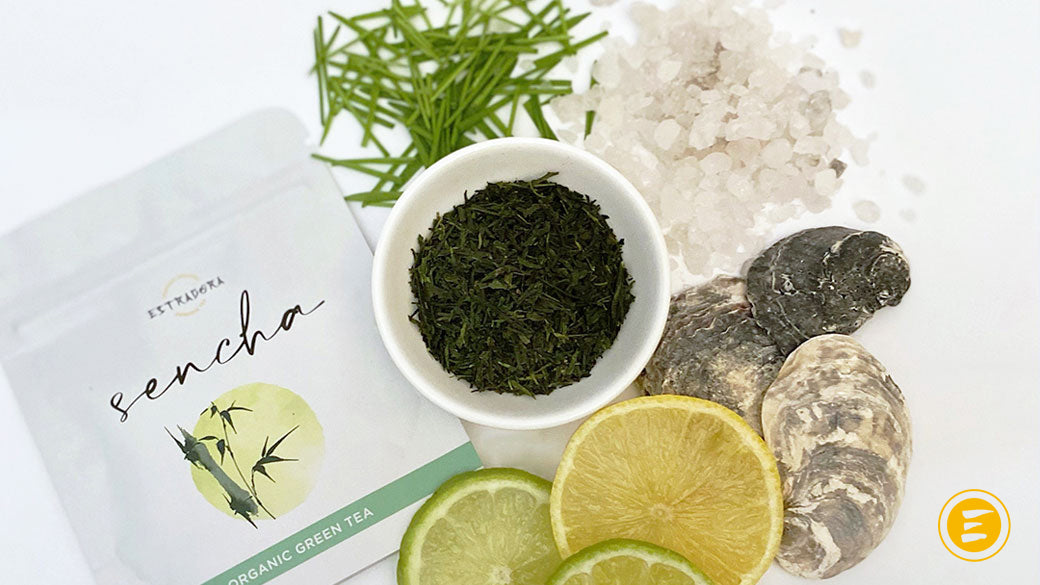
Japanese Tea Guideline

Japanese tea export to the whole world contains 6% which makes this tea very rare and limited. Many brands, in order to satisfy clients' demand, started to sell look-alike Japanese tea that in reality had been produced in other countries like China for example.
Problem is that Chinese manufacturers have their own technique, they mostly fry the tea, which affects color, taste and aroma while Japanese tea masters steam tea leaves and dry afterwards. Also, life- and business style influence a lot on the production process: China is one of the world import leaders of tea producing with a huge supply and demand, while Japanese tea manufacturing is mainly crafted on family-owned microfarms, with attention to details, keeping traditions and using modern technologies, preserving the tea art manufacturing heritage from generation to generation between farming families.
In general, classic Japanese tea sorts are:

Gyokuro shaded, dark emerald green tea with needle-like shaped leaves. Harvested once in a year, spring time. The most rare and expensive among all teas. Also called “Imperial tea”. Brewed beverage has a very light emerald color, almost bluish. Due to shading, theanine amount became lower and it makes tea sweeter and less astringent, with flower scent. All these factors make Gyokuro a Superior Ceremonial tea beverage.

Sencha green tea, which tea leaves are exposed to the direct sunlight during all period of growth, and produce Vitamin C and high levels of tannins. First spring harvest is considered the highest quality, with great freshness and flavor. Sencha leaves are steamed, rolled and dried and become a famous pine-needle form. Sencha has a flower, grassy smell, low astringency and zero bitterness. Superior Ceremonial tea beverage.

Kabusecha green tea, with a short shading period of 7-10 days before harvesting and a similar manufacturing process to Sencha. Shading reduces catechin amount that is contained in leaves and results in lowering bitterness, increasing natural amount of theanine that gives pleasant mildness and umami taste. Kabusecha is a Superior Ceremonial grade with milder taste than Sencha, higher umami flavor, and floral notes as Gyokuro.

Karigane is a stem or “twig” green tea, made from Gyokuro. Karigane has a light green color compared to Sencha and Gyokuro, it tastes milder, with natural sweetness, floral aroma notes and refreshing aftertaste. Tea stems get a lower amount of sunlight than leaves, so catechin amount is relatively lower, which lowering the natural bitterness. It`s light, very aromatic, refreshing Ceremonial grade tea.

Matcha powdered green tea, shaded 2-3 weeks before picking, in order to produce a special umami taste. New leaves are steamed from stems and veins, dried, rolled and grounded. Highest quality Matcha is from the 1st harvest, spring period, due to the high amount of vitamins and minerals of young first leaves. Brewed tea has sweet aroma and aftertaste, without astringency and bitterness. Natural source of vitamins and energy. Considered as one of the healthiest teas worldwide.

Genmaicha is a Ceremonial green tea with popped and roasted moti rice, also called “Geisha breakfast” or “Tea soup”. Genmaicha contains less caffeine, and is more suitable for children and elder people. It has a bright nutty aroma of roasted seeds and oatmeal cookies with freshness of green tea and light sweetness. This tea is good for your health due to GABA natural elements (Gamma-Aminobutyric Acids) that lower blood pressure, help you relax and lower stress levels.

Hojicha one of the most aromatic Ceremonial green teas due to high temperature roasting that also decaffeinated the leaves. It makes Hojicha a perfect low caffeine tea beverage suitable especially for children and elder people, and before sleep intake. Contains natural antioxidants and lowers cholesterol level. Hojicha can be loose leaf or powdered, from which you can prepare Hojicha latte, warm or with ice added, with stunning cappuccino aroma, very healthy, and low-caffeine caffeine level compared to general coffee cups.

Wakoucha very rare Japanese Black tea, limited production, first imported tea from Japan. Color, taste, smell of Wakoucha completely differs from Ceylon, Sri Lanka etc teas. It has a mild taste, light color, sweet notes of dried fruits and cooked sugar taste, floral honey aroma. Very gentle and tender oxidized classic black tea.
Also traditional green teas are often mixed with Matcha. In our shop you can find perfect combinations with Genmaicha, Karigane, Sencha etc.
You may either order a 50 g package with any tea of your interest and preference. Let the tea ceremony begin!

